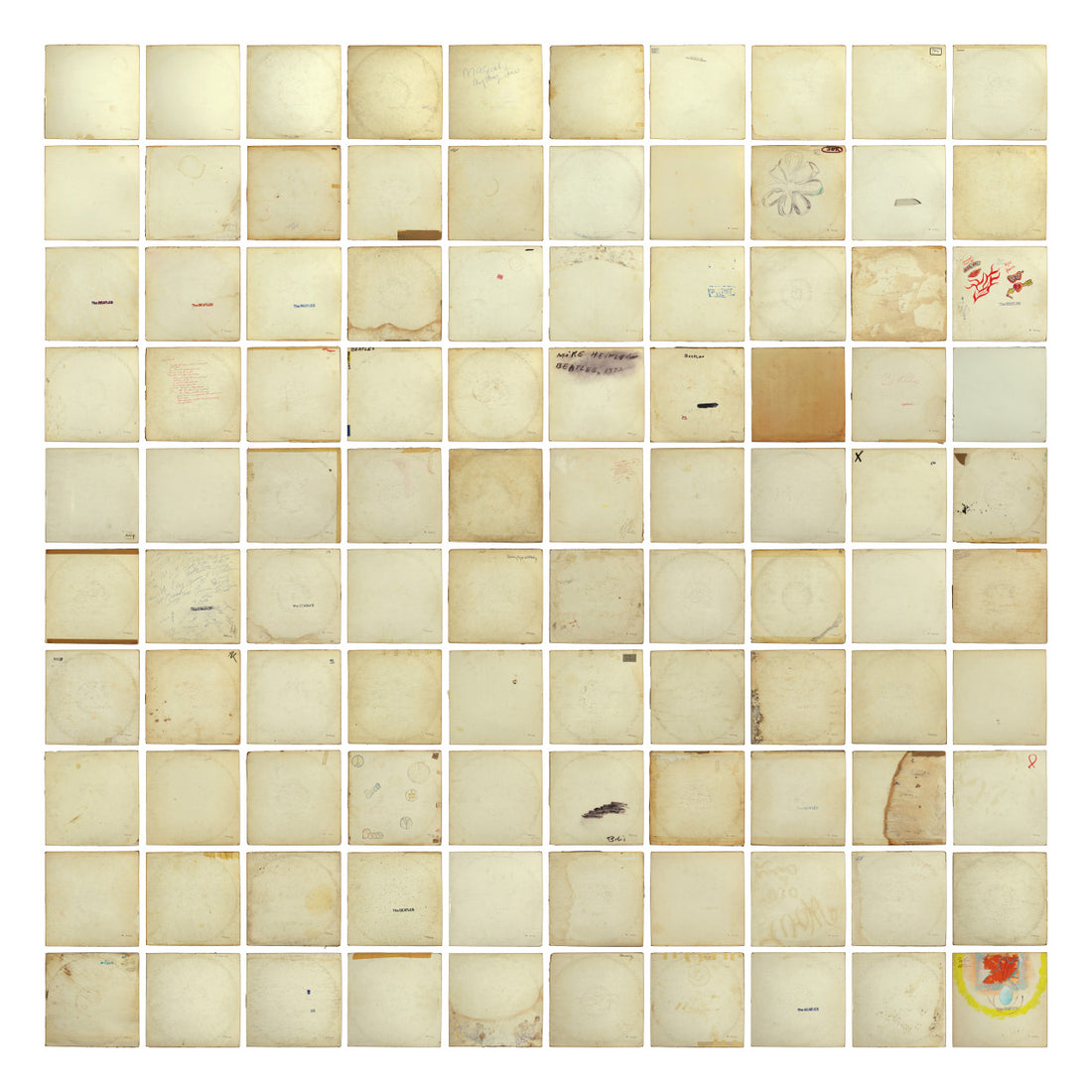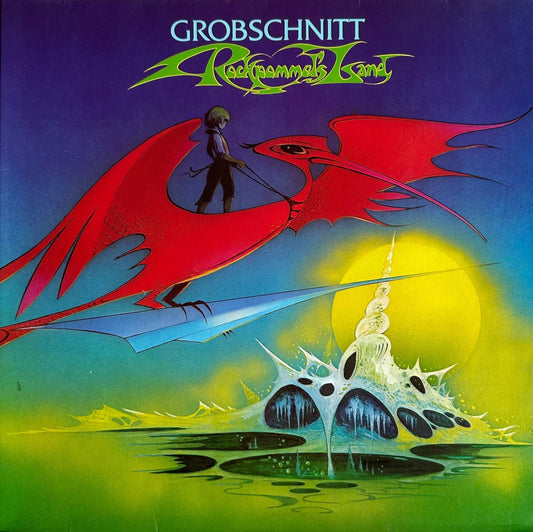Probably not as much as Rutherford Chang.
This is how I first heard about a collection of the Beatles’ White Album:
“Hey Jay Jay, there is a store somewhere that sells just The White Album.”
Hmmm, I thought, this is yet another level of Beatle Crazy that I needed to know about.
So, I did some research and was shocked to find out that the collector was (a) not really a Beatles fan and (b) his collection had nothing to do with the music!
First off, the collection of White Albums is not for sale. In fact, the man behind the whole affair, Rutherford Chang, doesn’t sell them…he buys them!
Then he travels with them as an art project and displays them in a self-described “store” at Beatles conventions. Hence the confusion.
I couldn’t wait to interview him. With the 50th anniversary of one of the Beatles’ greatest albums, I felt that now was the time!
Below is an excerpt from Wikipedia, which will give you a quick background of the history of The White Album cover artwork and its designer.
“Richard Hamilton, a notable pop artist who had organized a Marcel Duchamp retrospective at the Tate Gallery the previous year (1967), was responsible for the album’s original sleeve design. It is the only sleeve of a Beatles studio album not to show the members of the band on the front. His design was in stark contrast to Peter Blake’s vivid cover art for Sgt. Pepper, and consisted of a plain white sleeve with the band’s name discreetly embossed slightly below the middle of the album’s right side. The cover also featured a unique stamped serial number, ‘to create,’ in Hamilton’s words, ‘the ironic situation of a numbered edition of something like five million copies.’”
Hamilton has been quoted as saying, “Paul McCartney requested the design be as stark a contrast to Sgt Pepper’s day-glo explosion as possible.”
As a reader of all things Beatles related, I have heard/read rumors to the effect that John Lennon was so angry over Paul’s hijacking of the entire Sgt. Pepper/Magical Mystery Tour projects that he refused to pose for any pictures for the new cover (The Beatles’ double album, titled simply The Beatles), hence the decision to leave the album blank.
This was the first time that the Beatles were not presented in a group shot. The only pictures (both the black & white photos on the inside of the gatefold jacket and the separate color shots inside, suitable for removal to be taped up on your wall – I did!) are solo shots. That really says so much, as the album really has been referred to by none other than Beatles engineer, Geoff Emerick, as essentially 4 solo albums under one roof.
John Lennon received copy number 0000001. According to Paul, John yelled the loudest. [Confusingly, Ringo’s copy was auctioned in 2015 for $790,000, and was said to have serial number 0000001. Huh. —-Ed.]
Knowing this background, it is easier to understand and see what Rutherford Chang saw when he gazed upon the blank cover for the first time.
What Rutherford saw was art. A statement that reflected the times and over time that image, by how the albums were either written on by the owners or just the way they were stored in their respective record collections, began to tell him stories.
To begin with, the collection is solely based on the original run of albums that were sequentially numbered and manufactured in 1968/1969.
The albums had to be from the original run, 50 years ago, because it is time that tells the story (meaning how the white cover has aged over the years). This aspect is the art in the eyes of Mr. Chang. One look at his collection and it starts to become obvious. Maybe as a one off, it isn’t that apparent, but in an exhibition, (as in a wall of the covers) one starts to “see” what Rutherford “saw” many years ago.
Mr. Chang is a professional artist, so it is not surprising that, through the simplicity and minimalism of the cover, he saw what the creator Richard Hamilton saw. Rutherford just took it one…step…farther!
It is important to note that numbered White Albums in the original run were not just manufactured in the US. They were also manufactured in the UK, Germany, and Japan. These albums are also a part of this collection. Furthermore, The White Albums sold in America were the first Beatles’ release for sale only in stereo. There were no mono versions of the album manufactured in the US. The UK, however, did release both versions. The sonic differences between the two mixes are stark, but that is an article for another time!
And now, my interview with Mr. Rutherford:
Jay Jay French: How old are you?
Rutherford Chang: I’m 38. I was not around in the beginning…(laughs!) I am not a Beatles fan in the traditional sense.
JJF: When did you start collecting The White Album?
RC: I bought my first [White Album] in a garage sale, sort of randomly, as a teenager in the 90s [for a dollar]. I didn’t listen to the album that much. 12 years ago, I bought my second one (on ebay) and I became interested in collecting those albums. I began to see these albums as objects…they all went out to houses where they collected so much dirt, mold, graffiti, and artifacts that reflect this whole phenomenon of the Beatles and everything over the last 50 years.
Once I bought the second copy, I wanted to see how the unique copies became unique…so I kept going.
JJF: How so?
RC: This massive edition of these totally unique objects went out into the world for 50 years and is totally unique. They have different kinds of ring wear [that is the markings of the actual vinyl album that breaks through the bare cover over time and, in most cases, leaves a brown ring] mold, names written on them, (inc. art drawn on the cover by the buyer…ed) and they tell the story of the last 50 years. They are artifacts of the phenomenon of the Beatles. The way [the covers] have have been worn and torn says a lot.
JJF: You have no interest in buying a White Album that has no serial number, correct?
RC: Correct.
JJF: How many copies of The White Album do you have?
RC: Almost 2,100.
JJF: Do you make notes (serial number, date purchased, country of origin, etc.) on every single one of them?
RC: Yes
JJF: Do you ever sell the ones from your collection?
RC: I only buy White Albums. I don’t sell them.
JJF: Is it expensive to carry around the exhibit, and in how many countries has the exhibit been shown?
RC: The size of the collection obviously makes shipping not a small task, though it has managed to travel to several exhibitions around the world. I have shown it in 4 countries.
JJF: Do you listen, even for just a minute, to every copy you buy?
RC: I have not listened to every copy.
JJF: Are you still collecting White Albums?
RC: I still consider the project a work-in-progress and have not offered it [the collection] for sale.
Also, I would ask [people who look at the exhibit] if they would like to sell me a copy of The White Album. There are obviously a lot more copies out there.
JJF: What is the most you have paid for a copy?
RC: I’ve never paid more than $20.
JJF: What’s the lowest numbered copy in the collection?
RC: No 0002348.
JJF: When was the last time you bought a copy?
RC: August 26th, 2018.
JJF: Do you own a CD version of The White Album?
RC: No. I do not own a CD version. [laughs]
If you are interested in selling your numbered White Album to Mr. Chang, you can contact him here. You can also check him out on Instagram @webuywhitealbums.
[Since Jay Jay interviewed Rutherford Chang, the collection has added a few more albums. As of 8/8/19, the count shown here was 2,347. And no, I don’t pretend to understand this. —-Ed.]



